

40 Most Beautiful Arias - Luciano Pavarotti, Maria Callas, Placido Domingo, Bryn Terfel, Et Al. Luciano Pavarotti. Using Por and Para - Learn Spanish Language. Updated April 07, 2016.
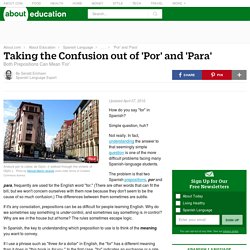
How do you say "for" in Spanish? Simple question, huh? Not really. In fact, understanding the answer to that seemingly simple question is one of the more difficult problems facing many Spanish-language students. The problem is that two Spanish prepositions, por and para, frequently are used for the English word "for. " If it's any consolation, prepositions can be as difficult for people learning English. In Spanish, the key to understanding which preposition to use is to think of the meaning you want to convey. If I use a phrase such as "three for a dollar" in English, the "for" has a different meaning than it does in "this book is for you.
" The following chart shows some of the major uses of these two prepositions. Uses for por: Expressing movement along, through, around, by or about: Anduve por las calles de Gijón. Denoting a time or duration when something occurs. Expressing the cause (not the purpose) of an action: Me caí por la nieve. Meaning per: Dos por ciento. The Whig Party. The Whig Party, in the United States, was for most of its history concerned with promoting internal improvements, such as roads, canals, railroads, deepening of rivers, etc.
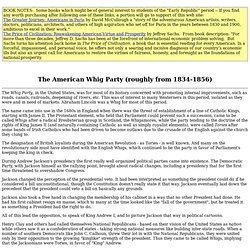
This was of interest to many Westerners in this period, isolated as they were and in need of markets. Abraham Lincoln was a Whig for most of this period. Service and Solutions. Special Report: Endless Summer—Living With the Greenhouse Effect. Some parts of the world could actually benefit from climate change, while others could suffer tremendously.
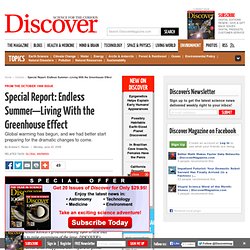
But for the foreseeable future the effects will he uncertain. No nation can plan on benefiting, and so, says Schneider, we must all "hedge our global bets," by reducing emissions of greenhouse gases. "The longer we wait to take action," he says, "and the weaker the action, the larger the effect and the more likely that it will be negative.
" Says meteorologist Howard Ferguson, assistant deputy minister of the Canadian Atmospheric Environment Service, "All the greenhouse scenarios are consistent. These numbers are real. Slow slicing. Slow slicing (simplified Chinese: 凌迟; traditional Chinese: 凌遲; pinyin: língchí; Wade–Giles: ling-ch'ih, alternately transliterated ling chi or leng t'che), also translated as the slow process, the lingering death, or death by a thousand cuts (simplified Chinese: 杀千刀; traditional Chinese: 殺千刀) or “千刀万剐”, was a form of torture and execution used in China from roughly AD 900 until it was banned in 1905.

In this form of execution, a knife was used to methodically remove portions of the body over an extended period of time, eventually leading to death. The term língchí derives from a classical description of ascending a mountain slowly. Lingchi was reserved for crimes viewed as especially severe, such as treason, or killing one's parents. The process involved tying the person to be executed to a wooden frame, usually in a public place. The flesh was then cut from the body in multiple slices in a process that was not specified in detail in Chinese law and therefore most likely varied.
J. China's last eunuch spills sex secrets. Hidden Power: The Palace Eunuchs of Imperial China. Introduction.
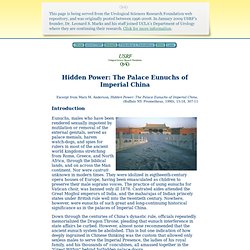
Four Big Pollution Diseases of Japan. The Four big pollution diseases of Japan (四大公害病, yondai kōgai-byō?)
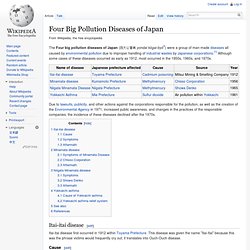
Were a group of man-made diseases all caused by environmental pollution due to improper handling of industrial wastes by Japanese corporations.[1] Although some cases of these diseases occurred as early as 1912, most occurred in the 1950s, 1960s, and 1970s. Itai-itai disease[edit] Itai-itai disease first occurred in 1912 within Toyama Prefecture. This disease was given the name "Itai-Itai" because this was the phrase victims would frequently cry out; it translates into Ouch-Ouch disease. Cause[edit] Minamata disease. Minamata disease was first discovered in Minamata city in Kumamoto prefecture, Japan, in 1956.
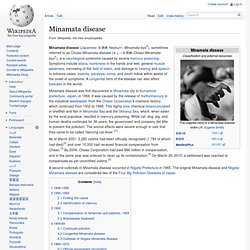
It was caused by the release of methylmercury in the industrial wastewater from the Chisso Corporation's chemical factory, which continued from 1932 to 1968. This highly toxic chemical bioaccumulated in shellfish and fish in Minamata Bay and the Shiranui Sea, which, when eaten by the local populace, resulted in mercury poisoning. While cat, dog, pig, and human deaths continued for 36 years, the government and company did little to prevent the pollution. The animal effects were severe enough in cats that they came to be called "dancing cat fever. A second outbreak of Minamata disease occurred in Niigata Prefecture in 1965. 1908–1955[edit] The Chisso Corporation first opened a chemical factory in Minamata in 1908. 1956–1959[edit] Chrysanthemum Throne. The Takamikura throne in Kyoto Imperial Palace is used mainly for accession ceremonies (1917)
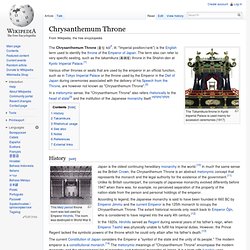
Scientology. Crown Princess Masako. Masako, Crown Princess of Japan (皇太子徳仁親王妃雅子, Kōtaishi Naruhito Shinnōhi Masako?)

, née Masako Owada (小和田雅子, Owada Masako? , born 9 December 1963), is the wife of Naruhito, Crown Prince of Japan, who is the eldest son of Emperor Akihito and Empress Michiko and the heir apparent to the Chrysanthemum Throne. She is a member of the Imperial House of Japan through marriage. If the Crown Prince ascends the throne, Masako will become empress consort. Early life and education[edit] Masako Owada (小和田雅子, Owada Masako?) Masako went to live in Moscow with her parents when she was two years old, where she attended Jetskisato No. 1127 daycare.[3] At the age of five Masako's family moved to New York, New York, where she attended New York City public kindergarten No. 81.[4] Masako received a scholarship to enroll in the Economics Department of Harvard College. Employment[edit] Courtship and marriage[edit] 500-yen coin was issued to commemorate the Imperial Wedding Family[edit] Children[edit]
Patsy Cline. Latter Days Saints (Mormons) Poop Tube (Mountain/Rock Climbing)